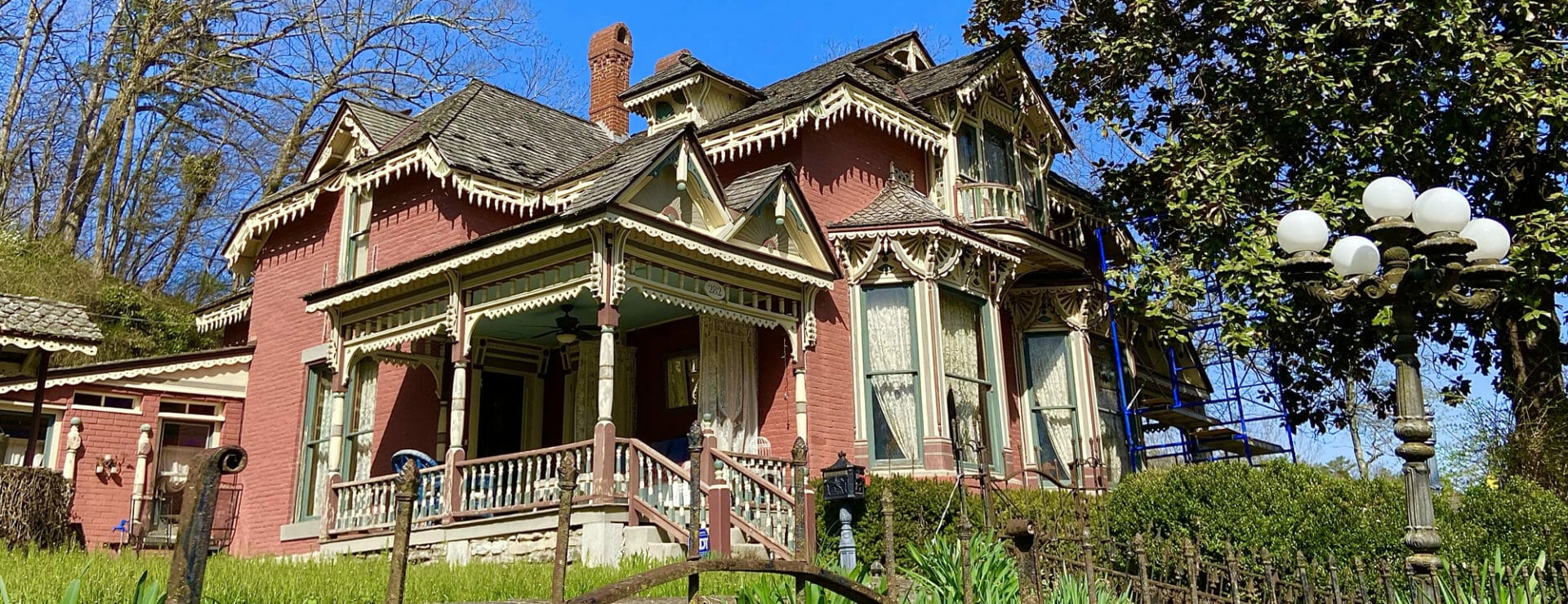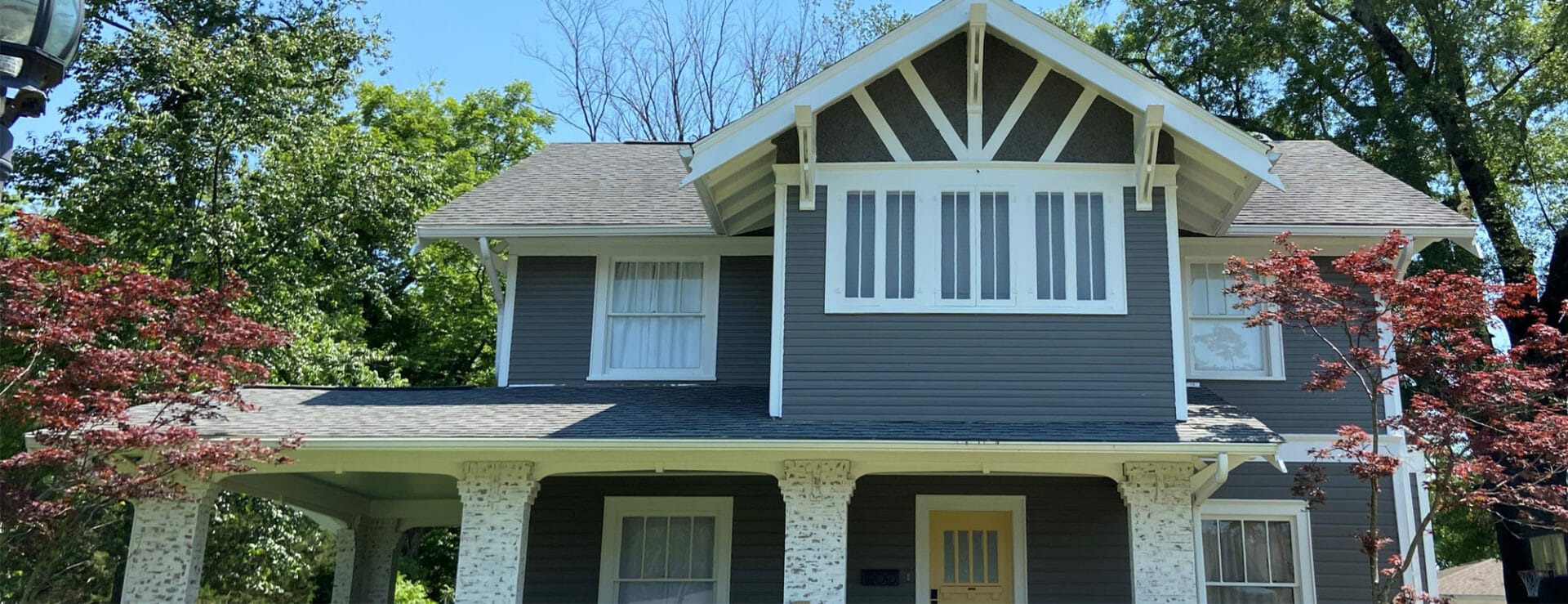

Uh oh...
It appears that you're using a severely outdated version of Safari on Windows. Many features won't work correctly, and functionality can't be guaranteed. Please try viewing this website in Edge, Mozilla, Chrome, or another modern browser. Sorry for any inconvenience this may have caused!
Read More about this safari issue.

As a kid born in the 1980s, I probably wouldn’t have ever known about motor courts if I hadn’t seen the movie “It Happened One Night.” This classic movie stars Clark Gable and Claudette Colbert. Without giving away too much, it’s about a couple driving cross country and staying overnight in motor courts. I was scandalized when I was little. This unmarried couple slept in the same room with a sheet hung between them for privacy. It makes me chuckle now that I found it shocking, especially considering this movie was a post Hay’s Code production and featured fully clothed characters, twin beds and nary a passionate kiss.
Motor courts were born because more and more Americans owned cars. People were no longer traveling by wagon or train. They were zooming down roads in their Model T’s like Clark Gable, traveling for fun, and they needed somewhere to sleep. Some of these early establishments were called “cabin camps,” but by the 1930s they morphed into sleeker motor courts. After WWII, families traveled even more, staying overnight in these roadside motels with their neon signs and outdoor ice machines.

Arkansas was no different from the rest of the country. Roadside motor courts popped up in most towns by the 1920s. They featured many luxuries for the time period, complete with fans, kitchens and radios. Little Rock was the site of Arkansas’ first motor court, Lape’s Tourist Camp, built in 1927. Hot Springs, with its booming tourist industry (thanks to natural hot springs and Oaklawn), became a veritable epicenter of motor court accommodations. As time wore on, chain hotels began to dominate road trip travelers’ choices. “Mom and Pop” motor courts paid the price and began to fade into the background of America’s traveling spirit.
But Hot Springs is unique because a few of these motor courts have been deemed historic landmarks. Many of these establishments still stand, and better yet, they still operate. Historically, interstate highways were the death nail in motor court coffins, and chain hotels ran most out of business. But Hot Springs never had an interstate cut through it like many other cities. Many of their motor courts survived. Some of these establishments have been remodeled into trendy, upscale boutique destinations. Their retro-tiled bathrooms and flickering neon signs are no longer ghosts of the past, but vintage hot spots for travelers looking for something more than a corporate chain hotel. This is a list of a few surviving motor courts you might want to visit if you’re a fan of Hot Springs’ historic past.

Lynwood Court
Lynwood Court is a 16-unit English Revival style motor court built in the early 1940s. This establishment was geared for long-term guests, with units originally boasting kitchenettes and garages (which were eventually enclosed to create additional units). Like many of the other historic motor courts in Hot Springs, Lynwood Court was eventually converted into apartments.

Photo courtesy of Cottage Court – Whit Bishop.
Cottage Court
Built in 1950, this was one of Hot Springs’ first motor courts. Notable for its ranch-style architecture, these buildings are now enjoying a new lease on life as “Dame Fortune’s Cottage Court.” They describe themselves as “a historic, boutique motel where modern amenities and vintage-inspired design merge with mid-century “roadside” motor court cool.” The property was completely renovated in 2016.

George Klein Court/ Green Elf Court
Most commonly known as Green Elf Court, this Craftsman-style establishment was built around 1940. Its eventual pale green paint color and a previous owner named Nicholas Elfter were the sources for its whimsical name change. It was advertised as a “fairyland of comfort.” This tourist court is located within a mile of Oaklawn, which made it convenient and walkable for horse-loving guests. These buildings eventually became apartments.

Cove Tourist Court photo used with permission.
Cove Tourist Court
Located at 771 Park Avenue, this motor court was constructed around 1937. It was built in the International architectural style. This particular architectural movement began in the 1920s and gained more popular traction in the 1930s. This type of style was defined as architecture from Holland and Germany with an emphasis on flat surfaces and industrial materials. Cove Tourist Court is another example of historic motor court renovations, as it is currently renovated and used as an upscale Airbnb.

Parkway Courts
One of the larger tourist courts in Hot Springs, this 48-unit establishment was constructed around the same dates as the others. It featured several unique floor plans in the units. Eventually it was converted to short-term apartments, and in 2016 the property was shut down and boarded up.

Perry Plaza Courts
William Perry, the original owner, operated Perry Plaza courts until he retired and handed over the business to his son. The motel (a conglomerate word stemming from “motor court” and “hotel”) was built in the International Style (much like Cove Tourist Court above). Like so many of its fellow Hot Springs motor courts, it was converted into apartments during the 1970s.
Many towns pride themselves on modernization, leaving the old to make room for the new. But Hot Springs not only embraces its historic buildings, it protects them. These historic motor courts, relics from a bygone era, are all listed as “Historic Districts” which provides them some safety from extinction. While some Hot Springs motor courts have been “saved” and given a new lease on life as boutique motels, others are still waiting for someone to step in and revive them. Because after all, if given the choice between a historic Rat Pack era motor court and a generic room at a chain hotel, most of us would choose character every time.
Cover photo: Best Tourist Court, Tichnor Brothers, Publisher, Public domain, via Wikimedia Commons.
Join the Conversation
Leave a Comment
2 responses to “Historic Motor Courts of Hot Springs”
 Leave a Reply
Leave a Reply
We do the work.
You check your email.
Sign up for our weekly e-news.
Get stories sent straight to your inbox!











 Leave a Reply
Leave a Reply
The Cottage Court is a truly wonderful place to stay. It’s by far our favorite. Another renovated court in Hot Springs well worth mentioning is the Best Motor Court, notable for its larger-than-average rooms and great restaurant.
My great Uncle Hill Wheatley built the Best Court on Ouachita in the 40’s. He also built next to it the Spike Hunter Court, my grandfather. He was Hill’s brother in law. I’m 75 now. I spent all my young childhood at my grandfather’s court. I believe it’s 642 Ouachita. The phone number was 1407. Strange I can remember these things 65 years later.